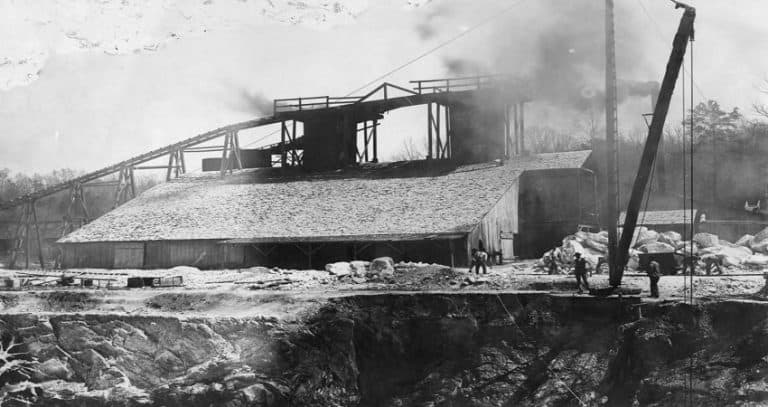Concrete vs Wooden Fence Post: Is Concrete Worth the Trouble?
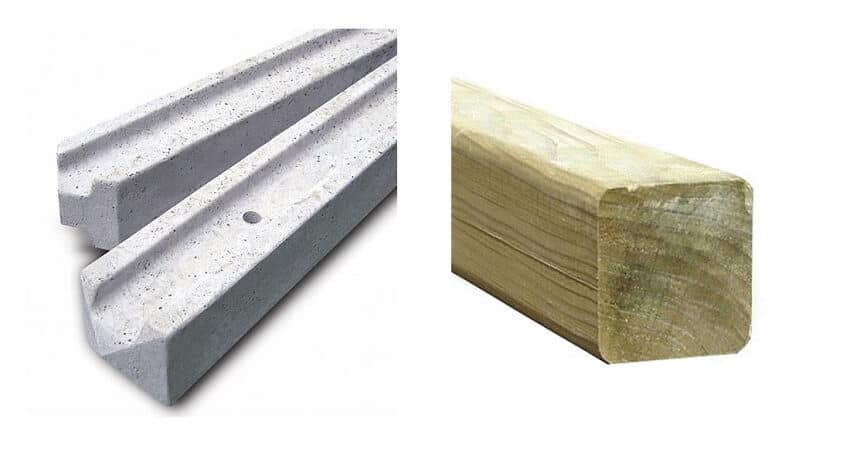
At first, we say that concrete and wood both are essential for doing our residential work. It isn’t easy to settle on a new fence for your property. When attempting to determine the pros and cons of fence posts made of wood and concrete, short and long term costs and sustainability of the fence post need to be addressed.
Both kinds of fence posts have their pros and cons, so this blog can help if you’re sitting on the fence, deciding whether to buy treated wooden fence posts or concrete fence posts. Both kinds of fence posts have their benefits and drawbacks.
The mainstays of a field boundary are fence posts and fence panels, so it is necessary to choose both of them wisely.
It may be tempting to concentrate all of one’s attention on the column, rather than the post, with so many eye-catching designs on the market, but neglecting to take time to pick the latter is a big mistake.
We’ll be contrasting timber and concrete in this post to help you make the right choice for your new fence.
Let’s get to our discussion about concrete and wooden fence post.
What is concrete?
Concrete is a composite building material consisting of asphalt, fine aggregates, coarse aggregates combined with water, and hardens. Concrete is used to the design foundations, columns, pillars, slabs, and other load-bearing components in building construction.
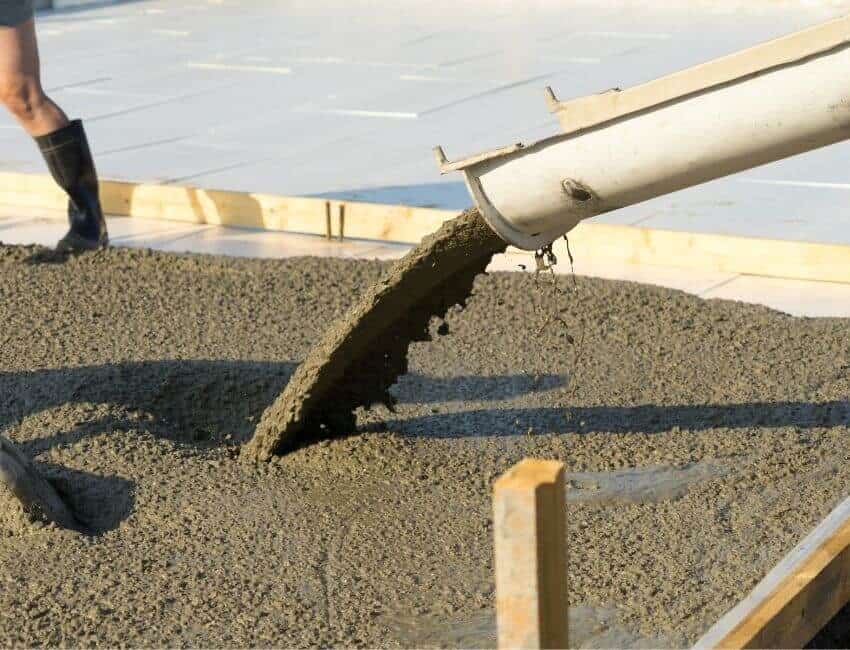
Three main components are concrete: water, aggregate (rock, sand, or gravel) and cement from Portland. Cement, usually in powder form, acts when combined with water and totals as a binding agent.
What is wood?
In plants, wood is the primary material. The xylem vessels which carry water up to the plant are mainly formed. It is challenging to cut timber, but it is solid as well. A lumberjack is a person who cuts down trees. The wood in it can be cut into lengthy, straight pieces called lumber after a tree fell.

Wood is a structural tissue present in the branches and roots of trees and other woody plants brittle and fibrous. Timber, as common today as ever, is a conventional building material.
Some Major Facts of concrete and wooden fence Post
Durability
Concrete is a sturdy substance with an established long lifetime that does not readily succumb to rot or insect attack, ensuring it is a highly stable, reliable material.
However, concrete posts are robust, sturdy and hard-wearing fence panel support, despite being heavy to bear. They can be awkward to manoeuvre, making them a common alternative for a long-lasting solution.
If the wood has been pressed for treatment and built with proper ventilation, a slotted wooden fence post would not rust. Unlike rival dip treated timber posts, our centres have been kiln-dried to decrease the moisture content to below 28 per cent. Then pressure loaded deep into the heartwood with our unique preservative concentrate, which forms an insoluble compound offering lasting protection against rot and insect assault.
The resilience of concrete is partly due to its capacity to survive rot and decay. As wood is a degradable material, it can get weathered with time if it is not stained and cleaned.
Wood is a natural commodity which is thus vulnerable to decay and can be seriously affected by high winds and other unfavourable weather conditions.
Depending on the kind of wood used, wooden fence posts can last for a very long time if handled properly and are still the most traditional fence post. UnThough, untreated open positions are vulnerable to warping, cracking and breaking and will need to be replaced after five years.
Concrete posts are incredibly durable and can last about 20 years, but they are not resistant to wear and tear and weather damage.
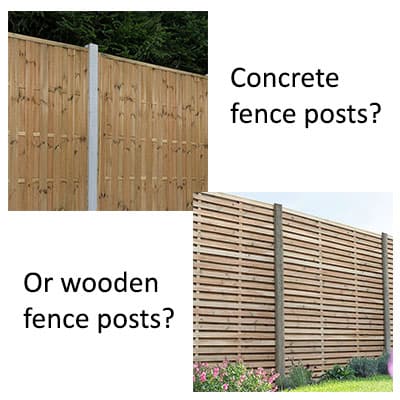
For broken concrete poles, caution must be taken as the internal wire reinforcements also will be exposed, causing a health and safety concern.
Installation
Installation requires a great deal of time and effort due to the sheer weight of concrete fencing posts. Usually, this requires an additional pair of hands or two to ensure the execution of a secure and prosperous task. So, if speed is a significant consideration, it is possible that concrete fence posts are not for you.
Concrete posts will take up a lot more the time to build them and will require more workforce, of course. A wooden post system is much lighter, needing less construction time and effort than required by the concrete structure. Installing a fence is just the first step in making the ideal fence. What it would look like would be the next concern.
That said, because the wood post is lighter, it has to be lowered into the earth a more significant proportion of it, so you would need to buy a longer post, making it more challenging to navigate.
Any material you pick, the individual panels slip into the posts quickly enough. Still, if you intend to decorate a concrete base with hanging baskets or tensioned wires for climbing plants, you require a drill, eye protectors, plugs, screws and a screwdriver to repair it. Only screws and a screwdriver would suffice when connecting them to a wood post.
Apart from the speed of installation, DuraPost’s compact design blends ease of installation with security. Thanks to the revolutionary nature of DuraPost, once the installation is complete, the fence panels can not be lifted, giving you optimum cover from your fence.
Strenght
The concrete would last without any repairs for a long, long time. It may be vulnerable to the elements being damaged, but even this can take a while. On the other hand, Wood, if it is not correctly handled, will have a comparatively short lifespan-rot will set in, which means you will have to pay to replace the infected fence post. And if the wood is handled, it would at most survive for about 10-15 years, which is also far short of the concrete’s 20-25 year lifespan.
Concrete posts in the open, exposed gardens have been proven to survive high wind levels and escape minimal damage. This is especially true in coastal areas where nearby seawater spray may be available. Timber that has not been kiln dried and then pressure treated in these conditions is likely to deteriorate rapidly in the open elements.
High-quality wood posts are pressure treated and supported by a 15-year anti-rot warranty, so you can be assured that they can last a very long time and create a minimum fuss.
Also, pressure-treated timber is not as stable and resilient as concrete, so we had to opt for concrete posts on this occasion.
Aesthetics
To give your garden a colder, more homely appearance, many homeowners reach timber posts and frames. By staining or repainting the surface to provide them with a new finish, wooden fence posts’ aesthetic can be easily modified. For those of you who intend to adjust your posts’ colour to match with the rest of your garden style, this makes wood the perfect option.
A top recommendation is to treat the bases with a water-soluble chemical and then stain or paint them for extra protection from the elements.
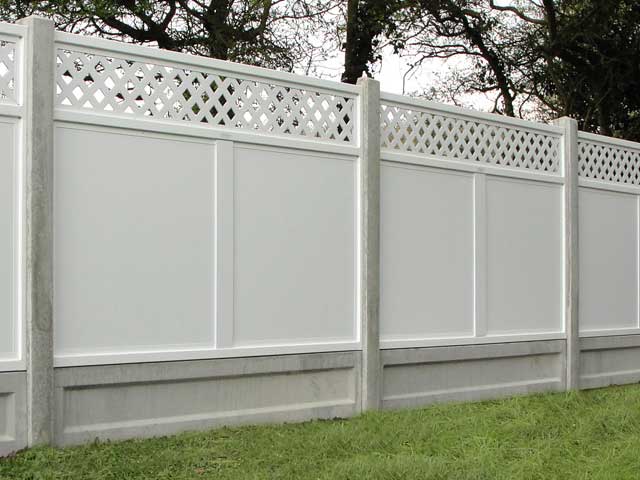
Ultimately, a fence post’s aesthetics boils down to personal taste. A wooden fence post provides a much more natural impact than concrete.
With wood offering a more realistic appearance, the variations between timber and concrete in terms of aesthetics are evident, but what your fencing would look like once built will be down to personal choice.
When it comes to aesthetics, all materials have their pros and cons, but it needs to be said that wood is a more natural-looking material than concrete.
Ultimately, your own choice comes down to it.
Sustainability
Rather than any other fence post, concrete fence posts have the most significant impact on our community’s protection. The compound has also been called ‘the most destructive on earth’. 4-8% of the world’s CO2 is said to be responsible for it. In short, we would not suggest concrete if sustainability is something you admire.
Any wood is harvested from renewable sources, with the felling of trees also involved in the process. Besides, wood handling can be detrimental to plants and animals. To protect the fence posts from insects, the additives used to conserve the wood are used. These chemicals may enter the soil and contaminate the soil or groundwater, damaging the life around you.
Sustainable land management activities worldwide, the preservation of endangered species, the mitigation of the impacts of climate change and the survival of trees for future generations are outstanding projects under the commodity name.
Therefore, as contrasted with other fence post structures, concrete fence posts have the highest adverse effects on the environment. Mainly though sourced from natural forests, Wooden fencing posts also entail felling trees that emit carbon into the atmosphere, leading to global warming.
Applications
Concrete fence posts are more decadent than wooden ones, so a little more work is needed for their construction. Wooden fence posts may typically be mounted on their own by someone, while concrete ones can require one or two pairs of extra hands to securely and effectively finish the job.
Depending on how important the installation’s peed, and ease is to you, it can be hard to say.
Security
Wooden posts are preferable instead of concrete, as fencing panels can be conveniently screwed onto the material. This avoids not only the irritating rattling sound that happens as panels pass in the wind, but also makes the fencing much safer.
Usually, separating a fence panel from the posts is one of the most common methods in which thieves gain entry to a property or have the ability to steal objects from a fenced garden. Therefore, wooden fence posts have the ideal remedy to keep your garden protected and, in exchange, your home safe.
Wooden fence posts allow the fence panel to be screwed to the pillars of the fence. In essence, this will avoid the irritating noise that happens in the wind as panels rattle. The fencing can also be made more stable by screwing fence panels onto the posts. Removal of a fence panel is one of the most popular ways objects or pets are taken from a fenced yard.
Maintenance
For 15 years, pressure-treated wood posts would not need to be covered in preservative, but it is still prudent to send them an annual inspection to ensure that they are safely in place and not harmed.
Concrete looks after itself outside of the occasional wash down of wet, soapy water, and is highly unlikely to experience wear or tear.
Since concrete is relatively impervious to liquids, the substance can not be readily breached by mould or decay, ensuring something that attempts to slip through is likely to only rest on the concrete’s outer layer. That’s why concrete is easily preserved.
As a consequence, it’s safe to conclude that it’s cheaper to maintain concrete posts.
Weight
Concrete pounds more heavily. A six-foot fence panel needs a robust concrete structure, and to manage, maneuver and get in position, they need a few people.
Wooden posts do not weigh as much as concrete posts, but building them is not as difficult. The typical fence post of concrete weighs approximately 40kg. For a 1.8 m high fence, a concrete post usually is twice the safe weight for one person to carry.
However, Stone is marginally smaller, but hard mind you, and a helper is still a fantastic idea, as in both posts and fencing.
There’s a bit of tweak-room for wood because it’s a natural material and a millimetre resistance or two would be slightly more accommodating.
Cost
You can’t rely only on the short term costs when it comes to pricing.
A cheaper fence may seem enticing initially. It could need to be replaced 3 or 4 times, though, and a more costly alternative will have become more cost-effective by then. This applies to timber fence post systems.

All of these fabrics have their pros and cons, but make sure that, based on the specific needs and budget limitations, you carry out extensive analysis before making your final decision.
It will initially be considered that a timber fence post is cost-effective, but the lifetime costs related to rotting, warping and breaking can increase the total costs. The same refers to individual posts that are easier to purchase, but their wear and tear instability mean higher lifetime costs.
You must know your goals if you are facing a debate about whether to have concrete or wooden fence posts. There’s no excuse not to use concrete for power, longevity and long-term value for money.
Fixing
You need a drill and fastening plugs together with screws and screwdriver to bring fixings into a concrete post. And eye protectors just in case substantial shards go flying.
It’s as simple as a wrench and screwdriver when repairing these same things on a wooden post. You can need to plug holes for bulky objects such as plant managers, but tense wires are a doddle to sort for training fruit or climbers over fence panels.
Appearance
Based on how they’ve been handled, wood posts start their life with either a faint orange or green hue, but will soon settle down to an appealing ash-brown colour.
You can dye or paint them in a variety of shades, but it’s fair to assume that any sort of garden boundary will fit wooden posts. Concrete posts are light grey and while algae can slightly dull the colour down with time, they will stay the same color for good.
This gives them a sleek, chic look that is perfectly ideal for a contemporary setting, but it could look out of place in a traditional cottage garden.
Some Important FAQs
Go through this question and answer section, please. This will help you in understanding the above subject.
How do you keep fence posts from rotting in concrete?
You should cover the hole from here with around 6 inches of gravel. By ensuring that the post is kept dry as water finds its way into the soil, this would discourage rotting. Place the bar in the stone until it hits the top of the pit, then cover it with a batch of cement.
How long will treated post last in concrete?
The post will last in concrete for a long time, maybe 5 to 10 years alone in the dirt. I recommend that you embed the bar in a concrete, trowel a peak around the post so that water flows out, and don’t encourage the PT post to come into contact with the earth.
Do pressure treated posts rot in concrete?
Pressure-treated timber, when exposed to damp environments such as trapped water, can rot in concrete. Pressure-treated wood set in the soil will last as long as 40 years in ideal conditions. However, pressure-treated wood will only last a few years when vertically placed in a non-draining concrete foundation.
ould you use concrete for fence posts?
Concrete is the most secure material for setting fence posts, especially if you have sandy soil. Using premixed concrete rather than dry concrete will ensure ultimate security. While concrete is sturdy, it lacks the drainage of gravel and can trap moisture, ultimately leading to rot.
Can you pour concrete against wood treated with pressure?
Yeah. YES. The moisture will wick any external concrete that is in contact with the soil. Thus, if one wants to build off the concrete with untreated wood next, it is essential to put pressure treated wood directly against the concrete.
Conclusion
Getting all the above facts covered, we have a simple winner. And we hope you may as well approve. For DuraPost, concrete and timber fence posts are no match.
We have the expertise to customise our facilities to meet your specifications, delivering outcomes, from continental fence panels and trellis work to perimeter fences and metal gates.
The decision is a tricky one to make. Depending on the garden conditions, both are the best options.

I’m a concrete contractor by trade and have been working in the industry for over 25 years now. I’ve seen (and done) it all when it comes to concrete, and I love sharing my knowledge and experiences with others who are interested in learning more about this amazing material. In my spare time, I enjoy spending time with my family, fishing, and watching NASCAR races.



